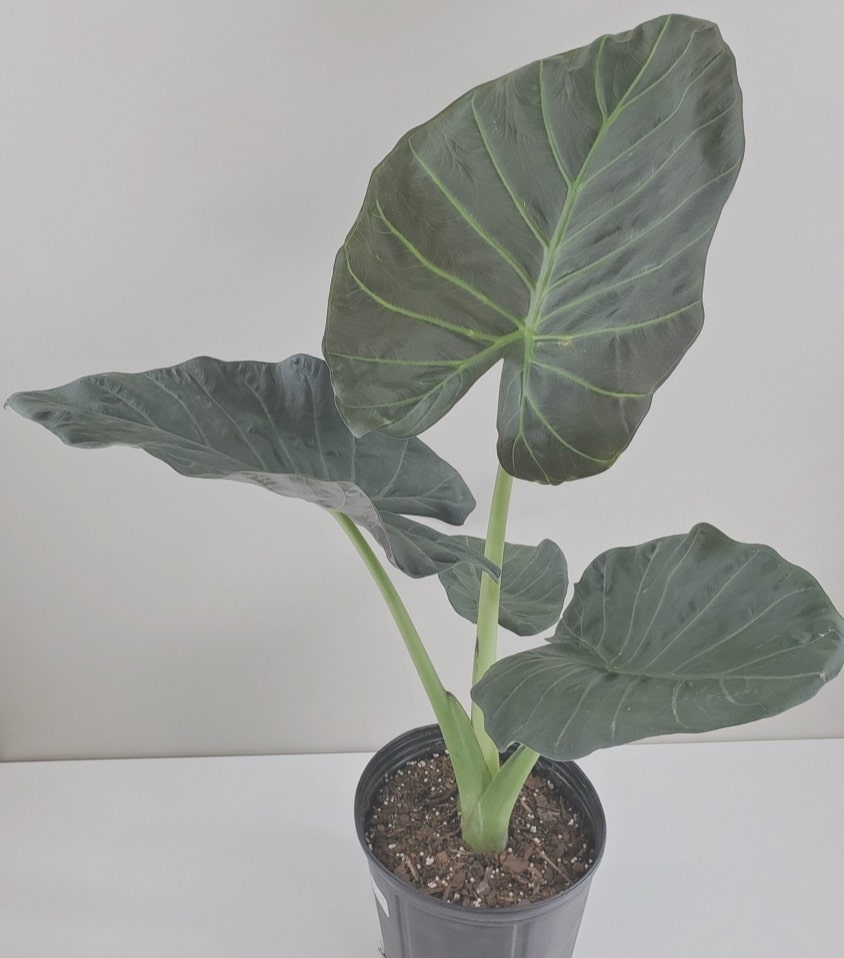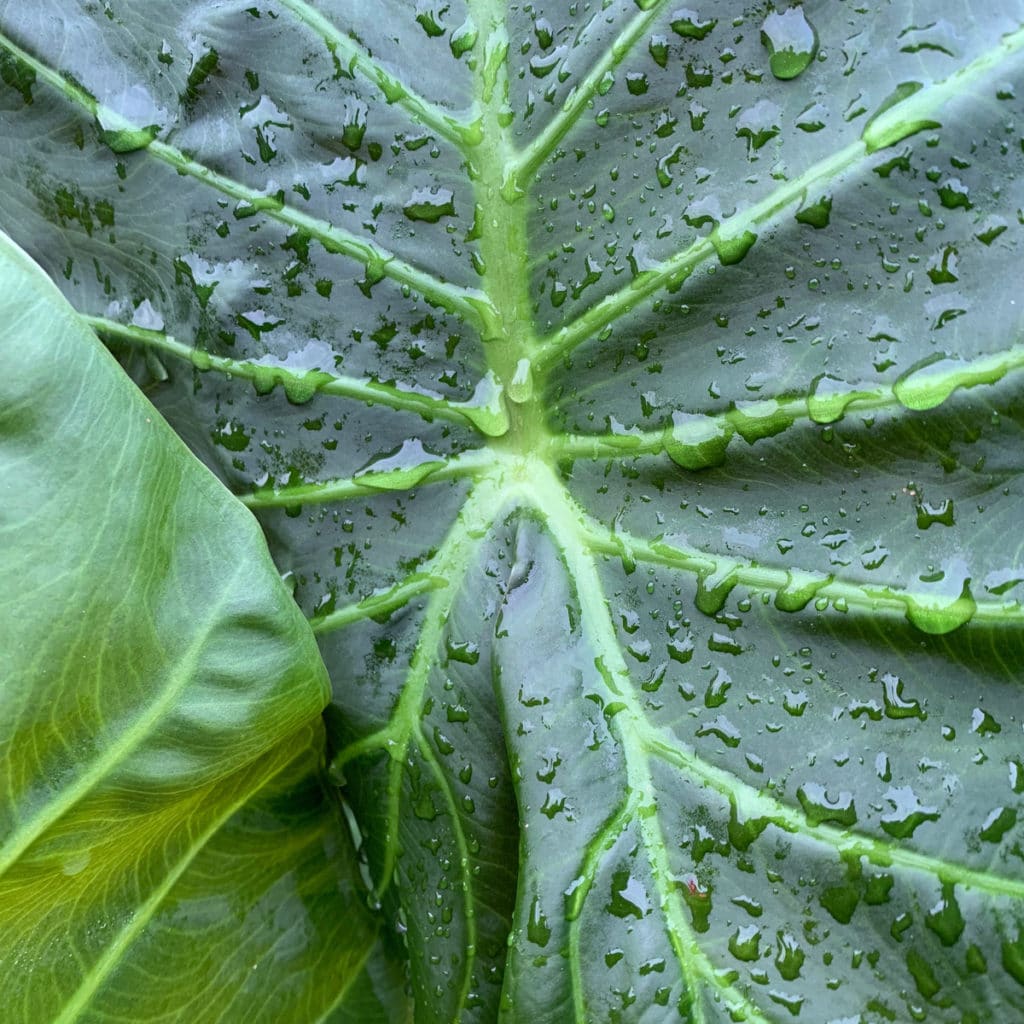The Alocasia Regal Shield Plant is commonly referred to as the elephant ear plant or the elephant Regal Shield. It’s a hardy plant that is fast-growing and can grow to be six feet tall if correctly cared for. This plant is therefore perfect for larger rooms and looks great in an office space or waiting room.
This particular plant is cultivated using the Alocasia odora and Alocasia reginula, which are native African plants. This plant looks great and is blackish-green in color. Each leaf stands up straight and has lighter colored veins.
The Alocasia Regal Shield can also be grown outdoor if you live in USDA zones 10 or 11. Let’s look at the best way to care for and grow an Elephant ear Regal Shield plant.
What is an Alocasia Regal Shield Plant?

An Alocasia Regal Shield plant is a flowering plant that is grown globally as a houseplant. This plant is part of the Alocasia family, which has over seventy different plant varieties.
The Elephants’ ear Regal Shield has large leaves and grows via underground rhizomatous. These houseplants generally grow to be between three and six feet tall. When they grow outside, they can grow to be larger, and some people report growing an Alocasia Regal Shield that’s nine feet tall. The plant’s leaves are also very large and grow to between eight and twenty inches.
Alocasia Regal Shield plants are generally grown for their lovely foliage. However, they can flower if kept in the right conditions. This plant produces white or pale yellow flowers if the weather is warm enough. They also become dormant during the winter and start to drop their leaves.
Like all members of their family, the Alocasia Regal Shield plant is toxic to humans and animals, but only if ingested. Ensure that your kids or pets don’t eat the plant’s leaves. If consumed, symptoms are likely to include skin allergies, sore throat, and vomiting.
Caring for an Alocasia Regal Shield Plant
Alocasia Regal Shield plants are very easy to look after; you just need to keep them in a well lite area and provide the correct amount of water. Here’s how to care for your plant:
Watering
You can water your Alocasia Regal Shield plant thoroughly and then leave it to dry out before watering again. Always touch your plant’s soil to see if it needs water, and be careful not to overwater your plant. Overwatering can lead to issues such as root rot and fungal infections.
In hot weather, your plant will likely require extra water. Your plant will need more water during the growing season, and you may need to water up to three times weekly in the summer.
Sunlight and Temperature
The Alocasia Regal Shield loves to live in medium to bright sunlight but shouldn’t be left in the direct sun for too long. They can be successfully grown on a windowsill. The plant will naturally grow towards the sun and can become unbalanced if it’s not rotated regularly.
If you’re planting your Alocasia Regal Shield outside, it’s best to find a well-lit area that has indirect sun. Don’t plant in the fierce sun as the leaves can get burnt. It’s best to grow the Alocasia Regal Shield in temperatures of between 55 and 80 °F. These plants don’t like cold weather, so you may need to move the plant into your home or a greenhouse in the fall.
Soil
Alocasia Regal Shield plants prefer well-drained soil which is rich in nutrients. You can use houseplant potting mix, which is quick-drying and has a PH range of between 5.5 and 7.0.
Humidity
Alocasia Regal Shield also loves being in climates with high humidity. Ideally, the moisture levels in the air should be over 80%. If you live in a drier climate, you can use a mister or humidifier to add moisture to the atmosphere.
Use a spray bottle to mist your plant’s foliage twice weekly. Be careful not to overdo it, as plants that are left with damp leaves are prone to fungal infections. Alternatively, you can put a pebble-water tray under your plant’s pot. Placing two or more plants close together also helps to improve humidity.
Fertilizer
Alocasia Regal Shield plants can be given a houseplant fertilizer about once every month during the growing season. Use a good quality product and always follow the manufacturer’s instructions. In most cases, liquid fertilizers can be mixed into the water when you water your plants.
Your plants don’t need fertilizer when it’s cold, and they’ve stopped growing, so don’t provide fertilizer in the fall or winter.
Problems that affect the Regal Shield Plant
There are a few problems that you may experience when growing this plant. These plants are often affected by spider mites and can go dormant if they get too cold, which results in leaf loss. Here are some of the most common issues and how to care for your plant:
Leaves Turning Yellow
It’s not normal for lots of leaves to quickly turn yellow or drop off. This will happen if you overwater your plant. If you notice leaves starting to turn yellow, it’s best to adjust your watering schedule.
Brown Spots on the Leaves or Brown Edges
If the leaves begin to turn brown, it’s likely to be caused by dry soil or low humidity. You may need to start misting your plants to improve humidity. Other ways to improve humidity include grouping tropical plants together, putting a pebble-water tray under your plant’s pot, or using a room humidifier. Plants often drop their leaves due to low humidity.
Conclusion
The Alocasia Regal Shield, or elephant ears, is a very popular house plant that is native to Africa. This variety is fast growing and can get very tall if it’s well looked after. These plants have attractive leaves and can be grown indoors on a windowsill or outside in the right climate. They have large blackish-green leaves and lighter veins.
You may also be interested in keeping a Alocasia Melo, or Alocasia Maharani as a houseplant, or in your
